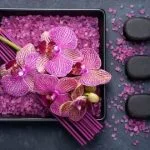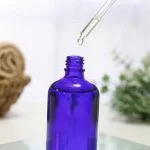Are you looking to create a more calming and soothing environment in your home or office? If so, learning how to choose an aromatherapy diffuser is an essential step in embracing the world of aromatherapy.
Aromatherapy diffusers are not only a stylish addition to any space but also provide numerous health and wellness benefits. From promoting relaxation and reducing stress to improving sleep and boosting mood, incorporating aromatherapy into your daily routine can have a positive impact on your overall well-being.
When it comes to selecting an aromatherapy diffuser, there are several factors to consider. Understanding the different types of diffusers available in the market, as well as their key features and functionalities, is crucial in making an informed decision. Moreover, ensuring the compatibility of essential oils with the chosen diffuser and taking into account design, noise level, maintenance, and cost-effective options are all important considerations that will help you find the perfect diffuser for your needs.
In this article, we will explore the benefits of using aromatherapy diffusers and delve into the various types of diffusers available. We will also discuss the key factors to keep in mind while choosing an aromatherapy diffuser, as well as provide tips on maintenance and cleaning. Whether you’re new to aromatherapy or looking to upgrade your current diffuser, this guide will equip you with the knowledge needed to make a well-informed decision.
Different Types of Diffusers
When it comes to choosing an aromatherapy diffuser, it’s important to understand the different types available in the market. Each type of diffuser has its own set of features and benefits, so it’s essential to explore these options before making a decision on which one to purchase.
Ultrasonic Diffusers
One of the most popular types of diffusers is the ultrasonic diffuser. These diffusers use water and ultrasonic waves to disperse a fine mist of essential oils into the air. They are known for their ability to maintain the therapeutic properties of essential oils while also adding moisture to the air, making them ideal for dry environments.
Nebulizing Diffusers
Nebulizing diffusers do not require water and instead disperse pure essential oil particles into the air. They are highly effective at providing strong aromatherapy benefits and are often preferred by individuals looking for a more potent aroma. However, they tend to be louder than ultrasonic diffusers and may not be suitable for all environments.
Evaporative Diffusers
Evaporative diffusers work by allowing essential oils to evaporate into the air through a fan or heat source. These diffusers are more budget-friendly and can be portable, making them a good option for those who want to use aromatherapy on-the-go. However, they may not be as effective at dispersing essential oils as ultrasonic or nebulizing diffusers.
Ultimately, when considering how to choose an aromatherapy diffuser, it’s important to weigh the pros and cons of each type based on your specific needs and preferences. Whether you prioritize quiet operation, strong aroma dispersion, or cost-effectiveness, there is a diffuser type that will meet your requirements.
Factors to Consider Before Purchasing
When it comes to choosing an aromatherapy diffuser, there are several key factors that you should keep in mind to ensure that you make the right choice. Understanding these factors can help you find a diffuser that best suits your needs and preferences. From the size of the diffuser to its run time, here are the main factors to consider before purchasing an aromatherapy diffuser.
Size and Capacity
One of the most important factors to consider when choosing an aromatherapy diffuser is its size and capacity. The size of the diffuser will determine how much space it can effectively cover with aromatic mist, while the capacity refers to how much water and essential oil the diffuser can hold. If you plan on using the diffuser in a larger room, you may want to opt for a larger-sized diffuser with a higher capacity.
Run Time
The run time of an aromatherapy diffuser refers to how long it can operate continuously before needing a refill. Depending on your needs, you may want to choose a diffuser with a longer run time if you plan on using it for extended periods or if you intend to use it overnight. Keep in mind that some diffusers have adjustable run times, allowing you to customize the duration of operation based on your preferences.
Diffusion Method
Different types of aromatherapy diffusers utilize varying diffusion methods such as ultrasonic, nebulizing, heat, or evaporative. Each method has its own set of advantages and disadvantages, so it’s important to consider which method best fits your needs.
Ultrasonic diffusers are popular for their quiet operation and ability to maintain the therapeutic properties of essential oils, while nebulizing diffusers are known for their strong aromatic output without diluting the oils. Consider how each diffusion method aligns with your preferences and lifestyle when making your choice on which type of aromatherapy diffuser is right for you.
By keeping these key factors in mind – including size and capacity, run time, and diffusion method – you can make an informed decision on how to choose an aromatherapy diffuser that best suits your needs.
Essential Oil Compatibility
When choosing an aromatherapy diffuser, it is crucial to consider the compatibility of essential oils with the chosen diffuser. Different diffusers are designed to work with specific types of essential oils, and using the wrong combination can affect the effectiveness of the diffusion process. Here are some factors to consider when ensuring essential oil compatibility with the chosen diffuser:
- Diffuser type: Different types of diffusers have different mechanisms for dispersing essential oils. For example, ultrasonic diffusers use water to disperse oils into a fine mist, while nebulizing diffusers do not require water and disperse pure essential oil particles into the air. It is important to choose oils that are compatible with the specific type of diffuser being used.
- Oil viscosity: Some essential oils have a thicker viscosity than others, which may impact their ability to be dispersed effectively by certain types of diffusers. It is important to check if the chosen oils are suitable for use in the selected diffuser.
- Oil purity: The quality and purity of essential oils can vary, and lower-quality oils may contain impurities that could clog or damage certain types of diffusers. It is recommended to use high-quality, pure essential oils that are suitable for use in aromatherapy diffusers.
In addition to considering essential oil compatibility with the chosen diffuser, it is also important to properly store and handle the essential oils. Exposure to heat, light, and air can degrade the quality of essential oils over time, affecting their aroma and therapeutic properties.
Ultimately, understanding essential oil compatibility with aromatherapy diffusers is crucial for maximizing the benefits of aromatherapy. By selecting compatible oils and using them properly in conjunction with a suitable diffuser, individuals can create a relaxing and therapeutic environment that promotes overall well-being.
Design and Aesthetics
When choosing an aromatherapy diffuser, it’s crucial to consider the design and aesthetics to ensure that it complements the decor of your space. The right diffuser can enhance the overall ambiance and visual appeal of a room while also providing the benefits of aromatherapy.
There are various designs available in the market, ranging from sleek and modern to elegant and ornate, so it’s important to choose one that suits your personal style and the existing decor of your home or office.
Consider the color, shape, and size of the diffuser when making your selection. If you have a minimalist aesthetic, a simple and understated diffuser may be more suitable, while those with a more eclectic style might prefer a diffuser with unique patterns or artistic elements. Additionally, consider where you intend to place the diffuser – for example, if it will be sitting on a shelf or tabletop, a compact design may be preferable.
Furthermore, some diffusers are designed to mimic natural elements such as wood grain or stone, which can add a touch of nature to your space. These options can blend seamlessly with various interior design styles and bring a sense of calm and tranquility to any room. By carefully considering the design and aesthetics of an aromatherapy diffuser before purchasing, you can ensure that it not only functions effectively but also enhances the overall look and feel of your environment.
Lastly don’t forget that while pleasing aesthetics are important in an aromatherapy diffuser don’t forget about functionality too.
| Factors | Considerations |
|---|---|
| Color | Choose one that complements your space |
| Size & Shape | Consider placement and style preferences |
| Natural Elements | Mimicking wood grain or stone for added tranquility |
Noise Level
When choosing an aromatherapy diffuser, one important factor to consider is the noise level of the device, especially if you plan on using it in a bedroom or office setting. The last thing you want is to be distracted by a loud humming or buzzing sound while trying to relax or work. Here are some tips for selecting a diffuser with a suitable noise level:
- Ultrasonic diffusers: These diffusers operate quietly and are ideal for use in bedrooms or offices where quiet is essential.
- Nebulizing diffusers: While these diffusers are known for their effectiveness in dispersing essential oils, they can be slightly noisier compared to ultrasonic diffusers.
- Evaporative diffusers: These diffusers use a fan to disperse essential oils, so they may produce some noise during operation. However, they are generally not as noisy as nebulizing diffusers.
It’s important to test the noise level of the diffuser before making a purchase, if possible. If testing it in person isn’t an option, consider reading customer reviews to get an idea of how loud or quiet a particular model is.
In addition to considering the noise level of the diffuser itself, also take into account the environment in which it will be used. For example, if you plan on placing the diffuser in a busy office setting with constant background noise, then the noise level may not be as big of a concern compared to using it in a quiet bedroom.
By keeping these factors in mind, you can ensure that the aromatherapy diffuser you choose fits seamlessly into your lifestyle without creating unnecessary disruptions.
Maintenance and Cleaning
When it comes to maintaining and cleaning your aromatherapy diffuser, it’s important to follow a regular cleaning routine to ensure the device functions properly and to prevent the buildup of bacteria or mold. First and foremost, always refer to the manufacturer’s instructions for specific cleaning guidelines as different types of diffusers may have varying requirements. However, there are some general tips that can be applied to most aromatherapy diffusers.
One important step in maintaining your diffuser is to clean it after each use. This can be done by emptying any remaining water and essential oil from the reservoir and wiping it down with a damp cloth. Be sure to unplug the diffuser before cleaning and avoid getting water into any openings or electrical components.
In addition to regular cleaning, it’s also recommended to deep clean your diffuser at least once a month. This can be done by filling the reservoir with a mixture of water and white vinegar, allowing it to sit for about 10-15 minutes, and then wiping it clean with a soft cloth. This helps remove any mineral buildup or residue from essential oils that may have accumulated over time.
| Maintenance Tips | Cleaning Guidelines |
|---|---|
| Clean after each use | Wipe with damp cloth |
| Deep clean once a month | Use water and vinegar mixture |
Another important aspect of maintenance is ensuring that the internal parts of the diffuser are functioning properly. This may include checking for any clogs in the mist outlet or making sure that the ultrasonic plate is free from any debris. Regularly inspecting these components can help prevent any potential issues with your diffuser in the long run.
By following these maintenance and cleaning tips, you can extend the life of your aromatherapy diffuser while keeping it in optimal working condition for an enhanced aromatic experience.
Cost-Effective Options
In conclusion, when it comes to choosing an aromatherapy diffuser, there are several factors to consider in order to make the right decision. Understanding the benefits of aromatherapy and the different types of diffusers available in the market is crucial in making an informed choice. Essential oil compatibility, design and aesthetics, noise level, maintenance and cleaning, as well as cost-effectiveness are all important considerations when selecting an aromatherapy diffuser.
One key aspect to keep in mind is essential oil compatibility. It is essential to ensure that the chosen diffuser is compatible with a wide range of essential oils, allowing for versatility and flexibility in your aromatherapy practices. Additionally, considering the design and aesthetics of the diffuser is important as it should complement the dcor of your space.
Furthermore, noise level and maintenance are also important factors to consider. Depending on where you intend to use the diffuser, such as a bedroom or office setting, it’s crucial to choose a model with a lower noise level for a peaceful ambiance. Additionally, understanding how to properly maintain and clean your diffuser will help prolong its lifespan and ensure optimal performance. Ultimately, exploring budget-friendly options without compromising on quality and effectiveness is possible with thorough research and consideration.
Frequently Asked Questions
What Should I Look for in an Aroma Diffuser?
When looking for an aroma diffuser, it’s important to consider the size of the area you want to cover, the type of essential oils it can accommodate, and the runtime. You’ll also want to think about the design and aesthetics that will complement your space.
What to Know Before Buying a Diffuser?
Before buying a diffuser, you should consider the different types available, such as ultrasonic or nebulizing diffusers, and how they disperse essential oils. It’s essential to research the maintenance requirements and make sure the diffuser is easy to clean. Additionally, think about your budget and any additional features you may want.
What Is the Best Diffuser for Aromatherapy?
The best diffuser for aromatherapy depends on personal preferences and needs, but many people prefer ultrasonic diffusers because they are quiet, energy-efficient, and provide a gentle way to disperse essential oils. Look for a diffuser with a larger water capacity if you plan to use it frequently throughout the day for aromatherapy purposes.

Are you looking for a natural way to improve your health and wellbeing?
If so, aromatherapy may be the answer for you.





